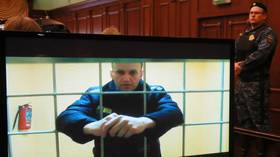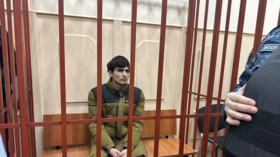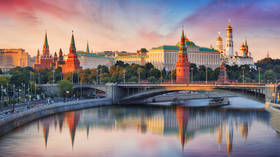Why China’s ‘united Asia’ is a tough sell

China’s top diplomat, Wang Yi, has recently urged Japan and South Korea to cultivate a sense of “strategic autonomy” from the West and work with Beijing to “revitalize Asia.”
“No matter how blonde you dye your hair, how sharp you shape your nose, you can never become a European or American, you can never become a Westerner,” Wang said.
The logic is quite simple, Asia should be for Asians, working together, and the US, as depicted by Beijing, is an unwanted third-party ‘external’ country that has no business there, and is subsequently framed as a disruptive force to the peace, prosperity, and stability of the region.
Except, it isn’t that simple. In the eyes of US allies South Korea and Japan, an Asia without America is an Asia dominated by China, or more accurately put, a return to the ‘Sinocentrism’ of the pre-19th century, when all East Asia revolved around Beijing as tributary states to the ‘Central Kingdom’. In the modern nationalist ethos of both countries, as well as others, this is as unacceptable, and therefore, the US is ‘invited’ in by them as a means of attaining their own privileges.
Self-determination
The foreign policy and hegemony of the US thrives by weaponizing the norm of ‘self-determination’, the idea that countries should be free and not ruled by others. In doing so, the US frames itself as the protector of all free nations and creates alliances of mutual convenience as a quid pro quo, supporting the independence of certain states in exchange for projecting its own geopolitical preferences into a given region.
For example, the US supports South Korea against North Korea, therefore gaining a military presence in the region. Similarly, the US supports Israel against its enemies in the Middle East, allowing the country to become a means of ‘power projection’ for Washington’s own interests. Likewise, this is the logic the US has applied to gain influence in Europe. Washington recognises that if it can foster conflict between great powers, it can sustain its hegemony perpetually by creating a need for itself. The US creates the crisis (such as dividing the Korean Peninsula, or isolating Taiwan from the mainland of China) then markets itself as the solution.
Or alternatively, it conquers rival empires, such as Japan, Italy, or Germany, and subsequently incorporates them into its own alliance system in exchange for sustaining their own privileges.
Asian nationalism
As it happens, Asia is a much more fiercely nationalistic region than Europe. This is because its ideology, even for the democracies, is not universalist or premised on ‘shared values’. Rather, a history of colonialism, combined with unresolved conflicts with their neighbours, have left Asian nations with a more lingering sense of security and defensiveness. This makes them patriotic, as opposed to the idea of embracing a ‘common heritage’.
For example, does it bother European nations that aspects of their own heritage and culture are derived from the ancient civilizations of Greece and Rome? Of course not, this is a shared ‘European’ sentiment. But in Asia, the idea of a shared cultural heritage, even when it is explicitly obvious, is taboo. Koreans react with rage whenever China lays claim to anything in their culture or dares to argue they invented it.
This is because starting in the 20th century, Korea rejected the historical notion of Sinocentrism and instead now emphasises its own nationalist exceptionalism. Subjugation to China is thus contrary to the Koreans’ identity, but an alliance with the US is not. Similarly, Japan does not accept Sinocentrism because it sees itself as a rival empire in its own right, which once upon a time tried to impose its own vision on Asia, known as the ‘East Asian prosperity sphere’.
Therefore, both countries effectively ‘invite’ the US in because it gives them geopolitical leverage and privilege, with their national pride rejecting a subservience to China. Again, to the south, Vietnam, while not technically a US ally, rejects the idea of Sinocentrism having once been dominated by China. Therefore, nationalism becomes an obstacle to the concept of ‘Asia for Asians’, as each Asian nation believes it is the best. This is why you can have two Asian countries, such as South Korea and Japan, who are both US allies, yet antagonistic towards each other.
But the flip side of this arrangement is that it means it is also harder for the US to create overlapping alliance systems in East Asia, or an Eastern NATO unit. In the Euro-Atlantic region, NATO functions because it utilises Western universalism in the name of ‘shared values’. But in East Asia, this is simply non-applicable as it is every nation for itself. China of course would very much like to create a shared notion of ‘Asianness’ in the value sense in order to expel the US, but it has not been effective at all in doing this. It will have to do a better job to persuade them that it is not a return to Qing Dynasty Tributary arrangements. Otherwise, the US can exploit these divisions perpetually to maintain its presence.
The statements, views and opinions expressed in this column are solely those of the author and do not necessarily represent those of RT.














